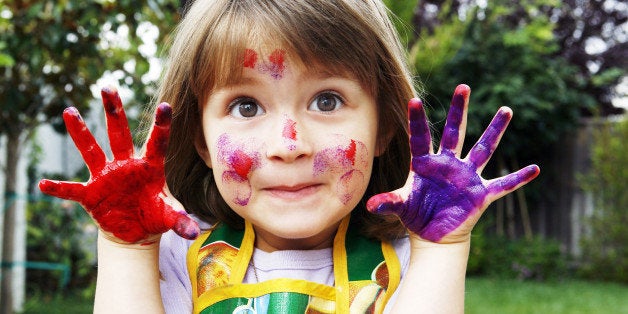
According to over 1,500 CEOs worldwide, the number one skill a future leader needs to have is creativity. While this might seem obvious, consider it in the following context. Since 1990, even as IQ scores have risen, measures of creative thinking have decreased significantly in the United States, particularly amongst kindergartners through third graders. This result has been so troubling that some have declared the United States to be in a "Creativity Crisis."
In order to prepare today's children's to become tomorrow's leaders, it is clear that an intervention is needed. A creative intervention. But our kids live in a paradoxical world: although technology is ubiquitous, it is typically used to consume media, rather than to create and implement new ideas. Investments in education technology are at an all-time high, but school curricula have become increasingly structured and standardized, at the expense of playtime and the arts.
Since creativity underlies innovation, how do we spark the curiosity of young children to better prepare them for the future? How do we design smart toys to inspire kids to create and innovate? "Smart" now has a dual meaning: smart toys provide children with an intellectual challenge, but are also connected devices in their own right, in the "Internet of Things" usage of the term. Technology has truly infiltrated every part of our lives.
As a learning designer building toys for kids, I ask myself similar questions every day. Here are five principles for designing "smart toys" that can help spark imagination and creativity in kids of all ages:
- KISS: "Keep it simple, stupid." Our obsessions with beeping, buzzing, flashing gadgets may make us seem plugged-in and tech savvy, but these "bells and whistles" can distract from learning. A 2013 study found that the presence of electronic features in storybooks negatively affected dialogue between parents and children during reading time and led to poorer story comprehension. Parents tended to spend more time interrupting the experience with comments like "Click here!" and "Don't turn the page yet!" When designing, focus on a set of core features and avoid unnecessary complexity.
John F. Kennedy once said, "In a crisis, be aware of the danger -- but recognize the opportunity." Declining creativity scores are troubling, but also present an opportunity. For those of us who design smart toys for learning, it's time to add some childlike wonder to new experiences and products that provide a foundation for the next generation to create the future.